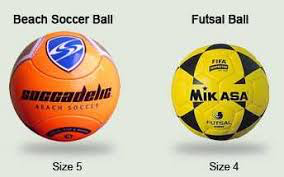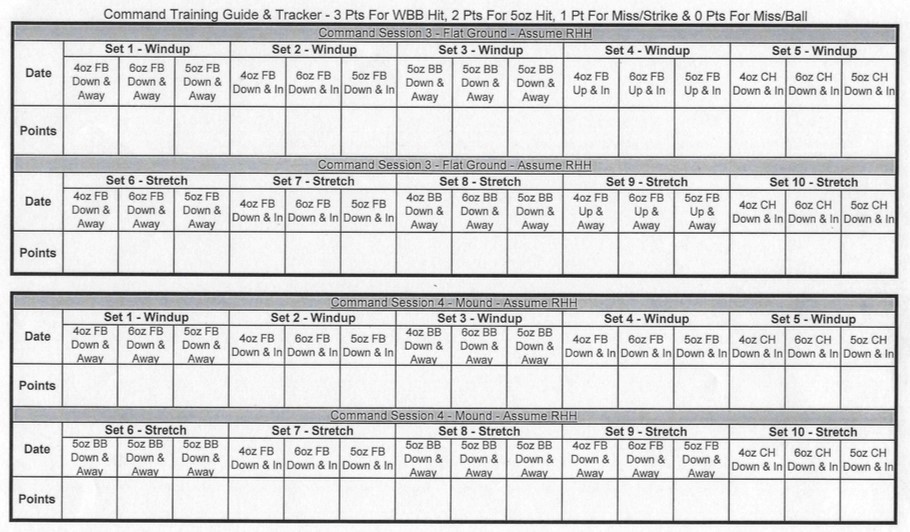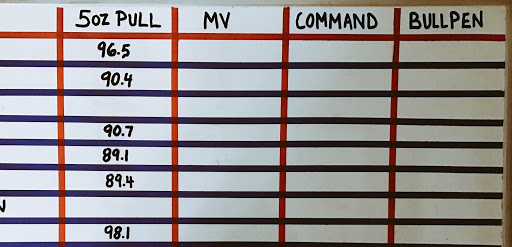Implementing Command Training Into Team Practice
Last time, we discussed if sacrificing intent is beneficial for improving command. Research looking deeper into the Speed Accuracy Trade-Off and human movement reveal it is not.
We know proprioception plays one of the largest roles in throwing strikes and commanding the baseball. Improving proprioception helps pitchers decrease endpoint variability, develop a more consistent feel for their pitches, and gain a better sense of where the body and arm is as it moves through space.
Command is not trained specifically at most levels of the game. Many throwing programs and player development strategies do not address it. A lot of that is due to the simple fact that few specific training programs and methodologies exist to help optimize for command.
How We Can Train It
The foundation of command and the ability to throws strikes consistently is built around good movement quality, mechanical efficiency and strength. In other words, keeping your pitchers healthy and improving their movement quality will allow them to maximize efficiency, move optimally on the mound, and do so without pain or discomfort. A coach’s ability to check those boxes off first and continually address them is paramount.
When it comes to command training, specifically, we are looking at kinesthetic awareness and ways to create a better proprioceptive map. One of the best ways to do this is by using overload, underload, modified implements (wrist weights, Plyo Ball ®, weighted baseballs, etc.), and differential learning methods.
Unfortunately, elite levels of command do not come from simply throwing a seemingly endless amount of regulation baseballs. If this were true, well, no one would have command issues. Pitchers have been throwing 5-oz baseballs their entire playing careers.
Weighted implements are a great proprioceptive tool for both pitching and hitting. The different weights give athletes immediate feedback while they go through similar ballistic movements with new stimuli. This helps them make adjustments and ultimately improves “feel” as they are completing the sames tasks (throwing) with small variations.
This is actually not new. Examples exist in other sports, such as basketball players using a slightly bigger and/or heavier ball to improve shooting range and accuracy. A more recognizable example is from Daniel Coyle’s book “The Talent Code”, where he describes Brazilian soccer players using Futsal to develop. Futsal is similar to soccer except it’s played with less players, a smaller field, some rule changes, and a different ball. A official Futsal ball is slightly smaller in size, slightly heavier in weight, and has 30% less bounce. Coyle and others have proposed that this improves ball-handling skills at a much faster rate and explains why Brazilian players historically have a large range of ball-handling creativity.

Integrating Command Training Into Your Practice
For starters, if your pitchers are currently using overload and underload implements in practice, you’re on the right track. Using wrist weights and Plyo Ball ® throwing within your practices and training accomplishes this. These training tools alone can help improve throwing mechanics and increase proprioception.
Another great way for you to incorporate the benefits of overload and underload training is to use weighted baseballs in long toss and catch play. Even something as simple as using them in catch play with a bit of focus and discipline helps contribute to the “feel” pitchers need.
Forcing athletes to make slight adjustments as they throw the different weights is extremely valuable when it comes to training consistent throwing accuracy.
https://twitter.com/drivelinebases/status/1031271829531328512
The primary way we train command on the mound with athletes is through the use of differential training. This is something you can easily integrate into your practice or training.
An easy way to introduce this to your staff (and a personal favorite) is to start simply by using a slightly overload and slightly underload ball. This involves throwing off the mound using a regulation baseball as well as a 4-oz (underload) and 6-oz (overload) ball.
This is even more effective now that our weighted baseballs are leather. Pitchers can work off the mound or flat ground for this. Tracking balls and strikes helps give each pitcher feedback in the form of strike percentage that is easily digested.
Not that long ago, we introduced our new Differential Command Training Baseball Set. We talked about the theory behind the balls here.
With these, the size of the actual implement (ball) becomes an additional variable. This set comes with an in-house command program that is tiered and built specifically with the idea of being able to have it integrate nicely into bullpen and/or flatground work.
When training, command rate of perceived exertion (RPE) is important. We recommend that command work be performed at least at 70% RPE—preferably higher so that it has the greatest amount of training carryover. Intensity can certainly be progressed over time, which we will get into in a bit. Using a radar gun is an easy feedback mechanism to assist with this.
One thing I’ve noticed when implementing command training with amateur athletes is that it requires supervision to insure effort levels are appropriate to induce a true training effect. A great way to solve this problem is to make these sessions competitive.
“How do you do this?” You make it game.
If you have a solid culture already in place or are looking to build one, competition is likely the centerpiece. Gamifying can help insure RPE, focus, and effort when your players are performing their command work. Creating the game aspect is fairly easily with a little preparation and creativity.
Here is an example of a tracking sheet from a few years ago that allowed me to not only track strike percentage but also get some feedback regarding the misses themselves. This tracker gave insight to who actually threw the ball to the intended location as well as strike percentage. We also have the ability to track balls and strikes in command work in our training software TRAQ.

As you can see, pitchers ended each session with a command score. This solved the problem of effort and focus almost immediately when implemented. It then became part of what we tracked (along with pulldown velocity, mound velocity, body weight and bullpen velocity) during our blend-to-season phase of training.

That’s not to say this is the only time it can be introduced. You can certainly add it to your fall training. You can also up the dosage for an individual who needs to be in a more command focused training program.
This brings up a few great points:
- Command work is not only for athletes on your staff who don’t throw strikes. For many athletes, differential command work was a preferred alternative to short-box work.
- This does not have to be fastball-only work. Pitchers can just as easily work on throwing secondary pitches in their sessions as well.
- You can also alter ball weights and sizes to make the sessions more individualized. Match up specific balls for certain guys who struggle consistently with the same pitch or location.
For all your pitchers, it’s important to progress them after getting a baseline. This will not only make it more challenging but also force them to adapt to new stimuli, more game-like scenarios and distractions. This is especially the case for guys that already throw a significant amount of strikes.
Here are a few examples, most of which I have used at the collegiate level with my staff:
- Progress the distance (50 feet to regulation distance)
- Go from flat ground to the mound
- Progress RPE (60-70% working up)
- Add a hitter (or two)
- Add a distraction (“hecklers”, unrelated task between throws, noise, etc.)
If you have our differential commands balls, you can use the program we provide and potentially combine it with some of the above.
For your athletes who already have a history of command issues, you may want to start them out in a position to succeed. For those individuals, I generally started them at lower RPE levels, at a closer distance, and progressed them from there. I also had success giving them a visual aid of some sort. This can be done by using two catchers or setting up screens in each batter’s box to create a visual tunnel for the athlete.
Final Thoughts
It bares repeating, throwing strikes is hard. Coaching it is also hard. As we touched on in part one, we cannot expect a simple solution to such a complex issue. Training methodologies that increase proprioception and kinesthetic awareness should be pursued in order to train command. Hopefully this article has provided you with some ways to accomplish that.
This article was written by Driveline Trainer Bill Hezel
Comment section
Add a Comment
You must be logged in to post a comment.
Ricky Norton -
Love the examples and explanation of how you actually apply it. Really appreciate the info. Would you ever use rapsodo to aid in these drills? If so, how?